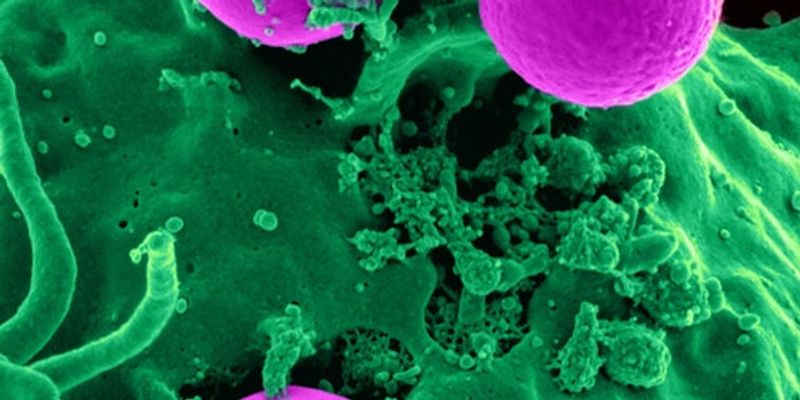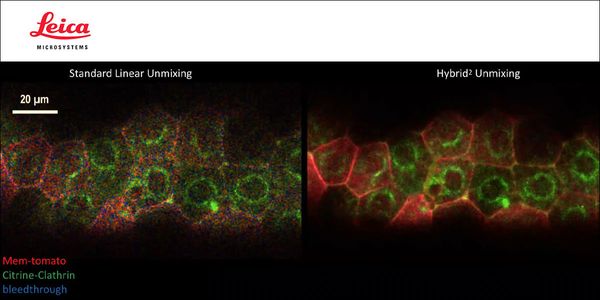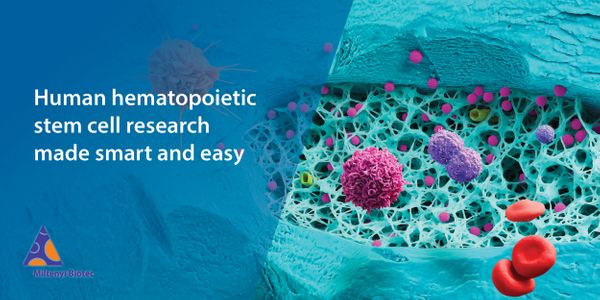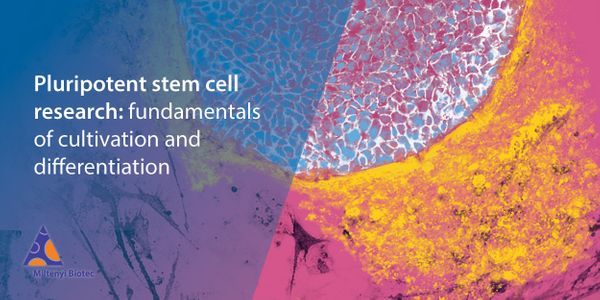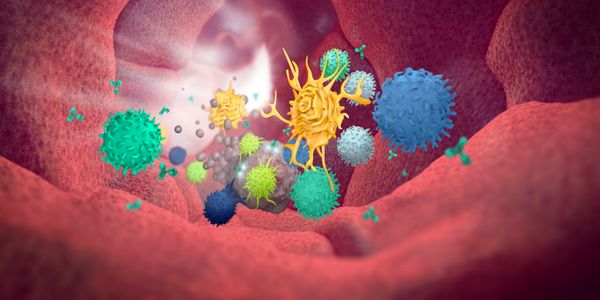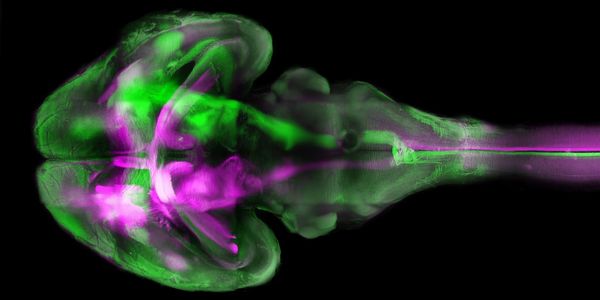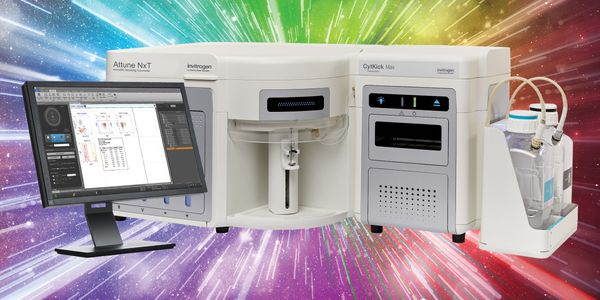Cell
Cell: is the smallest structural and functional unit of an organism, typically microscopic and consisting of cytoplasm and a nucleus enclosed in a membrane. Microscopic organisms typically consist of a single cell, which is either eukaryotic or prokaryotic.
-
JAN 27, 2021 | 9:00 AMDATE: January 27, 2021 TIME: 9am PST Well-timed interaction of correctly functioning maternal immune cells is essential to facilitate healthy placenta formation, as the uterine immune enviro...JAN 27, 2021 | 7:00 AMDATE: January 27, 2020 TIME: 7:00am PST resin columns is limited by throughput and a complicated sample preparation process, which makes it challenging to extend to high...JAN 26, 2021 | 8:00 AMDate: January 26, 2021 Time: 9:00am (PST), 12:00pm (EST) Over the past years, CRISPR/Cas genome editing has quickly become the method of choice for genetic manipulation, owing to its ease-of...JAN 19, 2021 | 8:00 AMDate: January 19, 2021 Time: 8:00am (PST), 11:00am (EST) Only a small subset of patients with clear cell Renal Cell Carcinoma (ccRCC) respond to immunotherapy with checkpoint inhibitors. Res...DEC 17, 2020 | 9:00 AMDate: December 17, 2020 Time: 9:00am (PST), 12:00pm (EST) Correlative light and electron microscopy (CLEM) advances biological discoveries by merging different microscopes and imaging moda...Speaker: Elizabeth Wright, Ph.D. , Jae Yang, Ph.D. , Bryan Sibert, Ph.D. , Joseph KimSponsored By: Leica Microsystems, AlveoleDEC 16, 2020 | 8:00 AMDate: December 16, 2020 Time: 8:00am (PST), 11:00am (EST) Molecular imaging of living specimens offers a means to draw upon the growing body of high-throughput molecular data to better under...DEC 15, 2020 | 10:00 AMDATE: December 15, 2020 TIME: 10:00am PST Scientists from Thermo Fisher Scientific will walk us through the world of microorganisms. They will discuss their most recent research on viruses,...Speaker: Sasha Vlassov, PhD , Jasti Madhu , Emily ZeringerSponsored By: Thermo Fisher ScientificDEC 09, 2020 | 9:00 AMDATE: December 09, 2020 TIME: 09:00am PST Hematopoietic stem cells (HSCs) ensure homeostasis of blood throughout life. In this webinar, we share insights into the smart and easy isolation, c...DEC 04, 2020 | 9:00 AMDate: December 4, 2020 Time: 9:00am PST, 12:00pm EST Activation of Myeloid cells and interferon release is an early response to infection. The 3-marker combination (CD169/CD64/HLA-DR) gives...This drug development program is designed to create a family of broad-spectrum, pan-coronaviral drugs that respectively inhibit multiple key enzymes required for viral replication. By target...
The severe acute respiratory syndrome coronavirus 2 (SARS-CoV-2) emerged in December 2019 and has spread globally, causing a pandemic of respiratory illness designated coronavirus disease 20...
Speaker:
Arutha Kulasinghe, PhD
, Miguel Muñoz-Ruiz, PhD
Antibody tests are important tools to assess the efficacy of vaccine candidates and to derive suitable vaccination modalities. High specificity and sensitivity are of great importance for th...
DEC 02, 2020 | 9:00 AM
DATE: December 2, 2020 TIME: 9:00am PDT Pluripotent stem cell (PSC) research is a continuously evolving field that beholds great promises for the future. The great application potential of P...
DEC 02, 2020 | 8:00 AM
DATE: December 2nd, 2020 TIME: 08:00am PDT, 11:00pm EDT Bioreactors and shakers are used to cultivate microorganisms, plant, insect, and mammalian cells in different volumes. Upscaling of pr...
DEC 01, 2020 | 1:00 PM
DATE: December 1st, 2020 TIME: 01:00 PM - PDT, 3:00 PM - Bogotá / Ciudad de México, 5:00 PM - Buenos Aires / Sao Paulo La anemia es un trastorno que afecta principalmente c&eac...
NOV 19, 2020 | 9:00 AM
DATE: November 19, 2020 TIME: 9:00am PT, 12am ET Knowledge of the three-dimensional structure of therapeutically relevant targets has become an essential step in the pipeline of drug discove...
NOV 19, 2020 | 8:00 AM
Date: November 19, 2020 Time: 8:00am PST, 11:00am EST Monoclonal antibody-based drugs have shown great potential as a treatment for several cancers. At Miltenyi Biotec, we offer a complete wo...
NOV 19, 2020 | 7:00 AM
DATE: November 19, 2020 TIME: 7am PST Congenital CMV is the most frequent infectious cause of neonatal malformation in developed nations. Yet, this disease is largely under-recognized by hea...
Two aspects of the Cost of Quality are important in the medical laboratory—the theory behind the quality cost types and the application of those cost types to laboratory activities. Th...
Speaker:
Lucia M. Berte, MA, MT(ASCP)SBB, DLM; CQA(ASQ)CMQ/OE
Presented at: A Bio-Rad Quality Control Virtual Conference
Date: November 19, 2020 Time: 12:00am (PDT), 9:00am (CET), 4:00pm (SGT) We present split-FISH, a multiplexed fluorescence in situ hybridization method that leverages a split-probe design to...
NOV 18, 2020 | 8:00 AM
DATE: November 18, 2020 TIME: 08:00am PDT We develop and implement technologies to solve some of the major bottlenecks in biomedical research. In particular, we establish new imaging approac...
NOV 18, 2020 | 7:00 AM
DATE: November 18, 2020 TIME: 7:00am PST, 10:00am PST, 4:00pm CEST The assessment of cell health and cellular responses after experimental manipulation continue to be a very important......
NOV 17, 2020 | 8:00 AM
Date: November 17, 2020 Time: 8:00am COVID-19 is a complex pathological condition caused by infection with SARS-CoV. Different features have been observed in patients with a severe dis...
NOV 16, 2020 | 8:00 AM
Date: November 16, 2020 Time: 8:00am (PST), 11:00am (EST) CRISPR screening has become the prime discovery tool in modern biomedical research and drug discovery. At the same time, most screen...
JAN 27, 2021 | 9:00 AM
DATE: January 27, 2021 TIME: 9am PST Well-timed interaction of correctly functioning maternal immune cells is essential to facilitate healthy placenta formation, as the uterine immune enviro...
JAN 27, 2021 | 7:00 AM
DATE: January 27, 2020 TIME: 7:00am PST resin columns is limited by throughput and a complicated sample preparation process, which makes it challenging to extend to high...
JAN 26, 2021 | 8:00 AM
Date: January 26, 2021 Time: 9:00am (PST), 12:00pm (EST) Over the past years, CRISPR/Cas genome editing has quickly become the method of choice for genetic manipulation, owing to its ease-of...
JAN 19, 2021 | 8:00 AM
Date: January 19, 2021 Time: 8:00am (PST), 11:00am (EST) Only a small subset of patients with clear cell Renal Cell Carcinoma (ccRCC) respond to immunotherapy with checkpoint inhibitors. Res...
DEC 17, 2020 | 9:00 AM
Date: December 17, 2020 Time: 9:00am (PST), 12:00pm (EST) Correlative light and electron microscopy (CLEM) advances biological discoveries by merging different microscopes and imaging moda...
Speaker:
Elizabeth Wright, Ph.D.
, Jae Yang, Ph.D.
, Bryan Sibert, Ph.D.
, Joseph Kim
Sponsored By: Leica Microsystems,
Alveole
DEC 16, 2020 | 8:00 AM
Date: December 16, 2020 Time: 8:00am (PST), 11:00am (EST) Molecular imaging of living specimens offers a means to draw upon the growing body of high-throughput molecular data to better under...
DEC 15, 2020 | 10:00 AM
DATE: December 15, 2020 TIME: 10:00am PST Scientists from Thermo Fisher Scientific will walk us through the world of microorganisms. They will discuss their most recent research on viruses,...
Speaker:
Sasha Vlassov, PhD
, Jasti Madhu
, Emily Zeringer
Sponsored By: Thermo Fisher Scientific
DEC 09, 2020 | 9:00 AM
DATE: December 09, 2020 TIME: 09:00am PST Hematopoietic stem cells (HSCs) ensure homeostasis of blood throughout life. In this webinar, we share insights into the smart and easy isolation, c...
DEC 04, 2020 | 9:00 AM
Date: December 4, 2020 Time: 9:00am PST, 12:00pm EST Activation of Myeloid cells and interferon release is an early response to infection. The 3-marker combination (CD169/CD64/HLA-DR) gives...
This drug development program is designed to create a family of broad-spectrum, pan-coronaviral drugs that respectively inhibit multiple key enzymes required for viral replication. By target...
The severe acute respiratory syndrome coronavirus 2 (SARS-CoV-2) emerged in December 2019 and has spread globally, causing a pandemic of respiratory illness designated coronavirus disease 20...
Speaker:
Arutha Kulasinghe, PhD
, Miguel Muñoz-Ruiz, PhD
Antibody tests are important tools to assess the efficacy of vaccine candidates and to derive suitable vaccination modalities. High specificity and sensitivity are of great importance for th...
DEC 02, 2020 | 9:00 AM
DATE: December 2, 2020 TIME: 9:00am PDT Pluripotent stem cell (PSC) research is a continuously evolving field that beholds great promises for the future. The great application potential of P...
DEC 02, 2020 | 8:00 AM
DATE: December 2nd, 2020 TIME: 08:00am PDT, 11:00pm EDT Bioreactors and shakers are used to cultivate microorganisms, plant, insect, and mammalian cells in different volumes. Upscaling of pr...
DEC 01, 2020 | 1:00 PM
DATE: December 1st, 2020 TIME: 01:00 PM - PDT, 3:00 PM - Bogotá / Ciudad de México, 5:00 PM - Buenos Aires / Sao Paulo La anemia es un trastorno que afecta principalmente c&eac...
NOV 19, 2020 | 9:00 AM
DATE: November 19, 2020 TIME: 9:00am PT, 12am ET Knowledge of the three-dimensional structure of therapeutically relevant targets has become an essential step in the pipeline of drug discove...
NOV 19, 2020 | 8:00 AM
Date: November 19, 2020 Time: 8:00am PST, 11:00am EST Monoclonal antibody-based drugs have shown great potential as a treatment for several cancers. At Miltenyi Biotec, we offer a complete wo...
NOV 19, 2020 | 7:00 AM
DATE: November 19, 2020 TIME: 7am PST Congenital CMV is the most frequent infectious cause of neonatal malformation in developed nations. Yet, this disease is largely under-recognized by hea...
Two aspects of the Cost of Quality are important in the medical laboratory—the theory behind the quality cost types and the application of those cost types to laboratory activities. Th...
Speaker:
Lucia M. Berte, MA, MT(ASCP)SBB, DLM; CQA(ASQ)CMQ/OE
Presented at: A Bio-Rad Quality Control Virtual Conference
Date: November 19, 2020 Time: 12:00am (PDT), 9:00am (CET), 4:00pm (SGT) We present split-FISH, a multiplexed fluorescence in situ hybridization method that leverages a split-probe design to...
